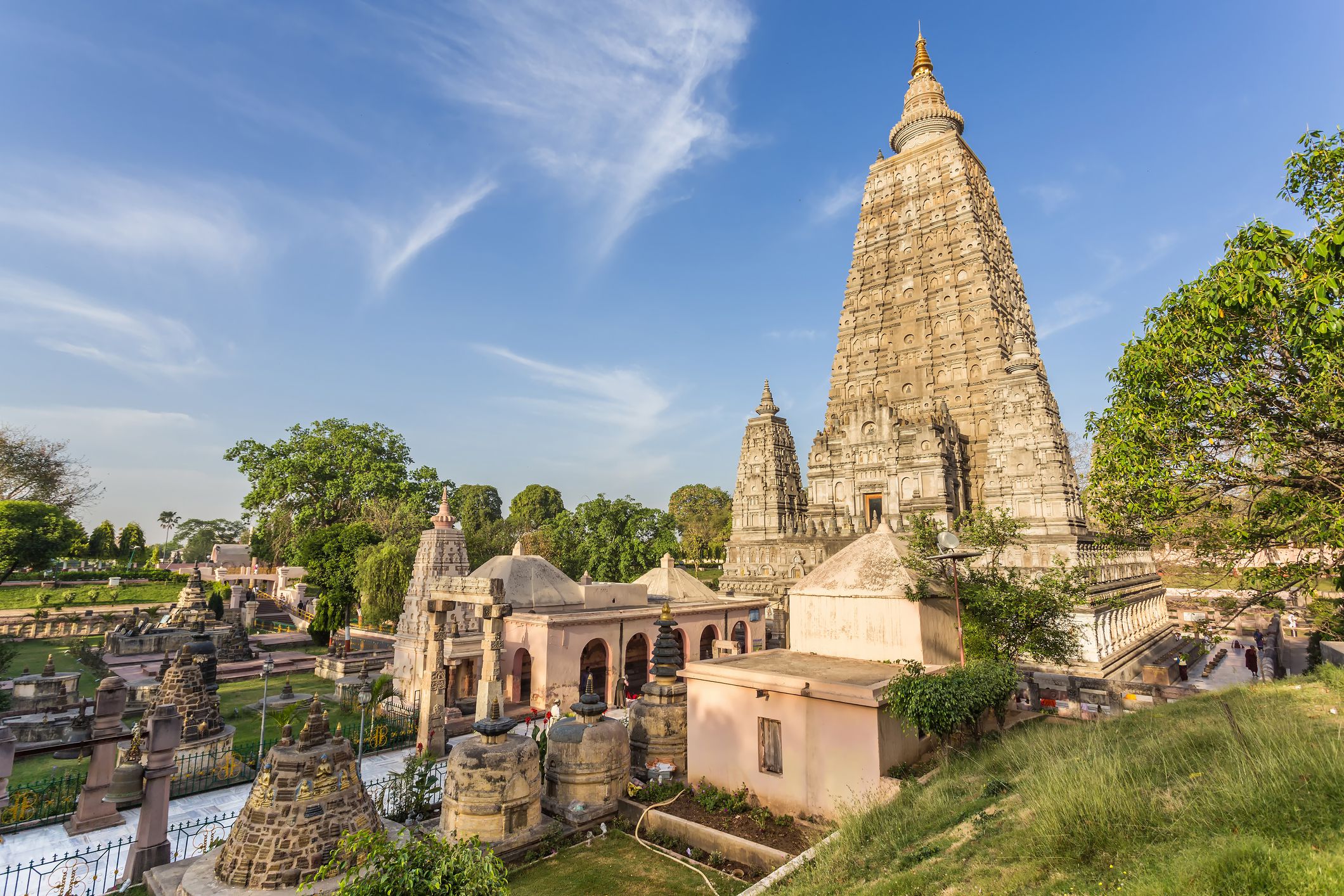Bodhgaya is one of the most significant and hallowed Buddhist journey communities on the planet. Under the Bodhi Tree, a banyan tree, Gautama attained supreme knowledge and transformed into Buddha, the Enlightened One. Born; Most of his major life events, like his enlightenment and final sermon, took place in Bihar while he was a Sakya prince of Kapilvastu (now in Nepal). The actual birthplace of Buddhism as a religion is Bihar, where the Buddha preached and led a life of extreme simplicity, renunciation, and compassion for all living things. Importantly, the name “Bihar” comes from the numerous “Vihara,” or monasteries, found in the state. Scholars and pilgrims alike were able to trace the life events and preaching of a truly extraordinary man thanks to the monasteries built by Ashoka for Buddhist monks and the pillars known as Ashokan Pillars, which were erected to commemorate numerous historical sites associated with the Buddha’s life and remain mostly intact to this day.
You can book a cab in Bodhgaya so that you can travel to this beautiful city without any hassle.
Top Places to Visit in Bodhgaya –
- The Mahabodhi Tree – we all have studied about this tree of enlightenment during our school days. This magnificent tree is situated in the famous city of Bodhgaya, where Lord Budha took his enlightenment. The Bodhi Tree can be seen to the east from the temple. Its engineering impact is magnificent. It has a 48-square-foot basement and rises in the shape of a pyramid until it reaches its cylindrical neck. The temple is 170 feet tall all around. Chatras, which represent religious supremacy, are situated atop the temple. The devotees have paid tribute to the black stone statue. Numerous votive stupas line the temple courtyard in its entirety. These stupas, which date back 2500 years, come in all shapes and sizes. The majority of them have stunning structural beauty. The temple’s ancient railings, which date back to the first century BC, are one of the most fascinating historical structures.
- Bodhi Tree – The Bodhi Tree that we see today is probably the fifth generation of the original tree that the Buddha used to reach enlightenment. Vajrasana, the seat of soundness, is a stone stage on which the Buddha should have sat in reflection looking east, under the Bodhi tree.
- Ratnagarh – It is believed that the Buddha manifested five colors while he was here for a week. Different Fortunes of Bodhgaya: Eighty-foot Buddha Statue, Lotus Tank, Buddha Kund, Rajayatana, Brahm Yoni, Chinese Temple and Monastery, Burmese Temple, Buddhist Monastery of Bhutan, International Buddhist House and Japanese Temple, Thai Temple and Monastery, Tibetan Monastery, and Archaeological Museum Sujata Village (two kilometers), Dungeshwari Hill (Prag bodhi), and the Maitreya Project (three kilometers) are all within driving distance.
- The Great Buddha Statue – more commonly referred to as the “80′ Buddha Statue,” was unveiled and dedicated on November 18, 1989, in the presence of His Holiness the XIV the Dalai Lama, who blessed the 25-meter statue. It was the first significant Buddha statue constructed in modern India. The sculpture is arranged close to
- Thai Monastery – Quite possibly of the most established unfamiliar cloister worked in the elaborate grand Thai building style. Both the exterior and the interior are breathtaking in their grandeur. The sanctuary reflects like a red and brilliant diamond over a quiet pool at the front deck. The magnificent Buddha idol, as well as the stylized mural paintings depicting Buddha’s life and contemporary events, such as the significance of planting trees, are stunning.
- Sujata Garh / Sujata Village – This ancient stupa is thought to be where Gautama Siddhartha meditated after performing severe fasting as a form of penance before becoming enlightened. Sujata, a villager, is said to have offered Gautama a bowl of rice pudding when she saw Gautama meditating severely malnourished. This village is around 2 km away from where the Bodhi Tree is situated.
- Dungeshwari Temple / Dungeshwari Hill – It is believed that Gautama Siddhartha meditated here for six years before traveling to Bodhgaya for the ultimate realization. In honor of this phase of Buddha, two small shrines have been constructed. In one of the cave temples, a large, approximately 6-foot-tall Buddha statue is enshrined alongside a golden, emaciated Buddha sculpture that is reciting strict penance. The cave temple is also home to Dungeshwari, a Hindu deity.
- The Baba Koteshwarnath – Temple can be found in the Village Main of the Block Belaganj in the District Gaya. The highly sacred Lord Shiva Temple can be found at the Gaya temple, which is at the point where the rivers Morhar and Dargha meet. The Koteshwarnath temple, which is 90 kilometers south of Patna, is thought to have been built around the 8th century AD.
- Dungeshwari Sanctuary – Dungeshwari Cavern Sanctuaries, otherwise called Mahakala caves, are arranged 12 km north-east of Bodhgaya, Bihar. The Buddha is said to have meditated in three caves that contain Buddhist shrines. The ancient caves are the Dungeshwari Cave Temples. Before ascending to Bodhgaya, Lord Buddha spent years mortifying himself in these caves. There are several Buddhist and Hindu shrines in the three main caves.
- Tibetan Refugee Market in Bodh Gaya – This market is a haven for shoppers. It offers a huge assortment of winterwear, handiwork keepsakes, and so forth.
Conclusion –
It is believed that Gautama Siddhartha diligently meditated there for six years before traveling to Bodhgaya for the ultimate realization. In honor of this phase of Buddha, two small shrines have been constructed. A brilliant starved Buddha mold remembering the unbending retribution is cherished in one of the cavern sanctuaries and an enormous (around 6′ tall) Buddha sculpture in the other. The cave temple is also home to Dungeshwari, a Hindu deity.


